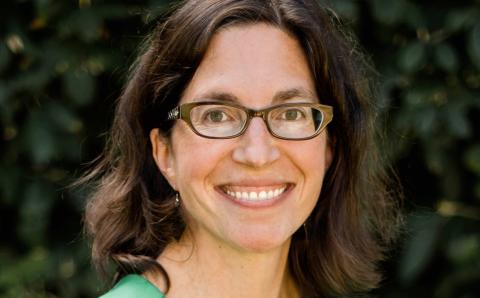Editor’s note: This article is the second in our newest series, “Seeking Shalom in the Midst of Polarization.” The series, in collaboration with The Colossian Forum, aims to examine the state of polarization in the U.S. and Canada and explore Christian strategies to overcome it. To read more articles in the series right now, visit TheBanner.org.
When people ask me where polarization comes from, I have to stop them to clarify something. Polarization per se is not the problem. The better question is, “Where did toxic polarization come from?”
When the organization I run, the One America Movement, first started talking about toxic polarization, we usually had to explain it. Toxic polarization, we would say, is different from just “normal” polarization. There’s always going to be some polarization in human society—and that’s a good thing! When it’s healthy, conflict makes us stronger. It strengthens marriages and families and friendships, leads to better public policy, and, yes, even helps churches grow and thrive. (I know, church conflict is usually not fun. But that's because it's often not “healthy!”)
Think about it this way: elections, where each side gets about 50% of the vote, are often contentious and can lead to real problems. But would you rather live in a country where the president wins with 99.9% of the vote? That’s usually a society with even more significant problems. Healthy conflict is good.
Unhealthy Conflict
But toxic polarization—well, that's different. That's unhealthy conflict. That's conflict in which winning becomes the goal, often at any cost. In toxic conflict, the other side becomes unfathomable, strange, alien—dehumanized. Yet the conflict itself is utterly predictable. Someone hurts us, so we hurt them back. And then it gets worse. We view the other person with contempt, so they view us with contempt back. And then it gets even worse. We come to see the entire world through a new lens: we are the good guys, they are the bad guys, and we are the heroes of our own Hollywood story.
Making this distinction between healthy conflict and toxic conflict is essential. But I hardly need to mention it these days. When we talk about toxic polarization today, we usually get a quick, knowing look. “Ah,” that look says, “you mean what we've been living through essentially non-stop since 2020?”
Yes. That.
So how did we get here?
There are many causes, and they all could merit their own article: talk radio, cable news, and social media. Geographic sorting. Secularization. Foreign interference in our political system. How our brains are wired.
Fixating on the causes can feel helpful. After all, if we know what causes toxic polarization, we can figure out how to fix it. But that same logic can often lead us to search for silver-bullet solutions that don't exist. The past five years are littered with examples of ideas and initiatives designed to fix toxic polarization that don't work for that very reason: there is no silver bullet.
The Cycle
The critical point is this: toxic polarization is a cycle. It's a negative feedback loop, a downward spiral that sucks us in and drags us down. Multiple, overlaid dynamics feed each other, making the problem worse and worse. And as it gets worse, the idea that we can solve toxic polarization seems increasingly naive. Those trapped in the conflict double down on the same behaviors and language that fuel that conflict in the first place because they see winning as the only way out.
Toxic polarization is a cycle. Here's how it works:
Toxic polarization feeds on the idea that there are essentially two “teams,” and the entirety of our identity is wrapped up in our team membership. Human beings are wired for belonging and connection, and our membership in groups is critical for us. Our brain processes exclusion in the same way it processes physical pain. Being left out feels like being punched. Being lonely feels like dying.
Being part of a group is healthy and good. For 2,000 years, Christians have organized themselves in communities or churches where they can worship together and support each other regardless of their differences. People belong to families, bowling leagues, clubs, schools, and other groups. These groups are the building blocks of society.
The problem is that when groups come into conflict, it can jump-start a negative cycle. A few important things begin to happen once we are in this us vs. them mindset.
First, we cling closer to our own group for protection from “them.” Now the stakes for being accepted in or rejected from our group are higher. We must belong at all costs—not just to protect us from our enemies, but because we have nowhere else to go. In political terms, if you are a moderate conservative or liberal and the other party is also reasonably moderate, being kicked out of your party wouldn’t be a catastrophe. But when both parties are dominated by extremes, joining the other party seems unfathomable.
Second, because retaining our membership is so important, we stop acting in ways that might appeal to the other group and double down on behaving in ways that allow us to maintain membership in our group. There are always true zealots, but for many group members this is simply performance. We say what we know will win us applause or applaud when we believe we are supposed to. Criticizing your own group's actions becomes difficult or even dangerous. It becomes harder to make decisions, and extremism increases.
Finally, because of that dynamic, lots of people become silent. People who don't belong to either group fall silent or silently choose the lesser of two evils rather than be left out to dry somewhere in the middle. People who belong to one of the two groups fall silent when they hear the extreme rhetoric of their side lest they be kicked out of their group for insufficient loyalty to the cause.
The Price of Silence
In many ways, it's helpful to think of groups in this atmosphere as having 10 members: two are loudly divisive and hostile, seven are silent, and one is willing to speak out against their own side’s harmful speech. That one person is often quickly kicked out of the group for heresy. But what about the seven silent people? What do they believe?
Their silence makes it impossible to tell. This does two things.
First, it causes the other silent people to try to guess what the members of their group are thinking. Speaking out is clearly dangerous, but it would have a tangible impact if the seven spoke out together. But they can't speak out together if they don't know if anyone else will have their back.
Second, their silence makes the entire group seem monolithic to the other side. To a liberal, conservatives who are silent about the actions of the most extreme conservative are equivalent to agreeing with those extreme voices—and vice versa. And what’s the point of making peace or constructively engaging with a group of people who are all extreme?
All of this causes a few things to happen to us.
First, we get worse at understanding the world around us. The reconciliation group Beyond Conflict found that “Americans incorrectly believe that members of the other party dehumanize, dislike, and disagree with them about twice as much as they actually do.” In short, we believe we’re more polarized than we are—and that misperception can drive us even further apart. This makes us worse at solving problems, worse at assessing the claims we see on cable news and social media, and worse at working with people different from us, all of which further fuel the cycle of toxic division.
Second, because disagreement generally becomes unhelpful and even painful, we actively seek places where we will not encounter any. The church world knows this all too well. Pastors speak about a particular topic and then watch as congregants walk out the door and find a church where the pastor thinks as they do. Churches require masks or don't require masks, attracting people who want or don't want masks while losing those who feel differently.
Finally, we become consumed. Toxic polarization creates an environment where a particular worldview demands our total allegiance. From a Christian perspective, of course, this is a form of idolatry. And because a pessimistic, partisan worldview does not offer the best parts of religion, redemption, hope, and love, we are left to be consumed by outrage, contempt, and self-righteousness, fed by a voracious 24-hour news cycle and social media algorithms.
Another Way
It doesn’t have to be this way. When we understand how our brains, time, hearts, and souls are being manipulated and activated for and by toxic division, we can start to chart a path in a different direction. For Christians, group membership has always meant being in a community of people who care for you and love you, for whom your unity in Jesus stands above political disagreements. That’s still possible. Maybe this crisis of toxic polarization is the opportunity we've been waiting for, the opportunity for the church to be the church in countries grappling with significant challenges.
At One America, we often talk about how our goal is not to have people quit their group and join a different one. We're not trying to make Democrats more conservative or Republicans more liberal or anybody more moderate. Instead, we believe that overcoming toxic polarization means everybody becomes the best version of themselves. We want Democrats to be the best version of Democrats, Republicans to be the best version of Republicans, Christians to be the best versions of Christians, and so on.
For Christians, this can start with simply following Jesus’ teachings at their most basic level.
First, if your pastor says something you disagree with, talk to him or her about it. Ask questions. Start a conversation instead of “canceling” them and immediately looking for a new pastor who more closely agrees with your political or social views.
Second, keep in mind that most Americans, and Canadians too, for that matter, are not at the extremes, and the media portrayal of any side is usually not representative of where most people are. So stay curious. Cultivate a relationship with one person who is different from you.
Finally, ask yourself whether you want your church to look like Congress or like a beacon of light. Toxic polarization thrives on the predictability of conflict, on each side doubling down at every turn. Whether your church is dealing with polarization internally or seems to be at odds with other parts of your community, you can untangle destructive conflict by doing the thing everybody least expects you to do.
Befriend the person with whom you are at odds and listen to them. Reach out to a community that might not have favorable views of Christianity. To paraphrase Maya Angelou, people rarely remember what other people say, but they remember what other people do and how other people make them feel.
Toxic polarization is a nasty, vicious cycle. We can’t control what politicians or media figures say or do. But we can manage our own participation in that cycle.
We can decide to be part of the problem, or we can model the teaching of Jesus in the world and be a beacon of light in our country, our communities, and in our church pews.
Discussion Questions
- In your own words, describe the difference between healthy conflict and toxic conflict.
- Do you see yourself caught up in the cycle of toxic polarization? How and why?
- Are you surprised that most of us believe we’re more polarized than we are? Why or why not?
- From the author’s various suggestions, which one action item can you start doing to help break the vicious cycle of toxic polarization? Why did you choose that one?
About the Author
Andrew Hanauer is president and CEO of the One America Movement (oneamericamovement.org), a national nonprofit confronting toxic polarization in our society by equipping faith communities to confront division and work together across political, racial, and religious divides to solve problems that matter.









